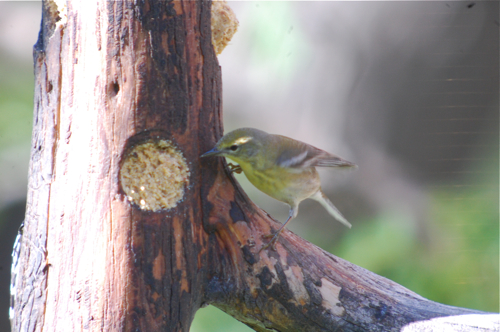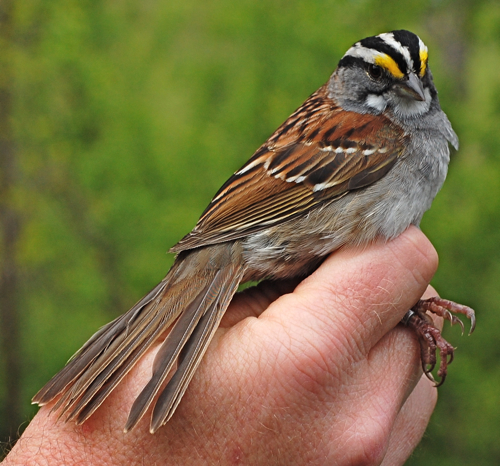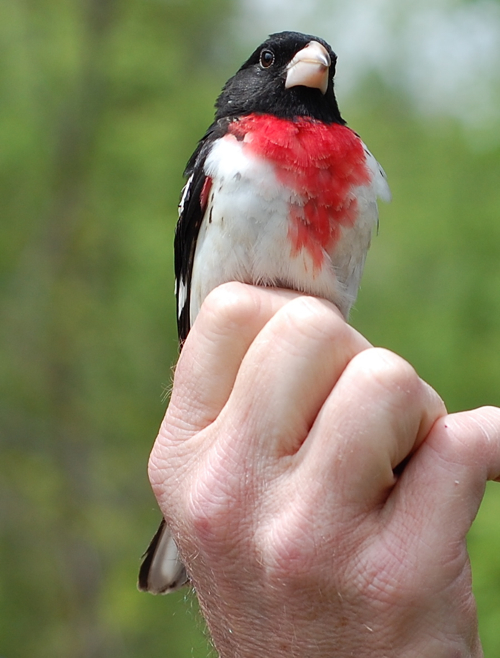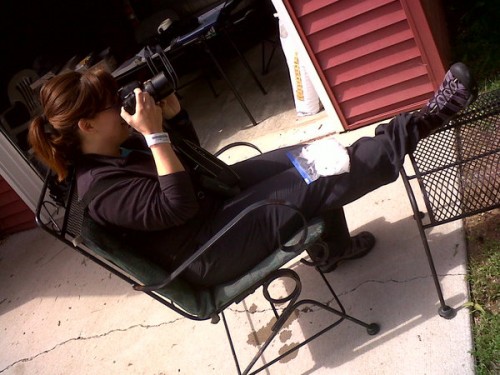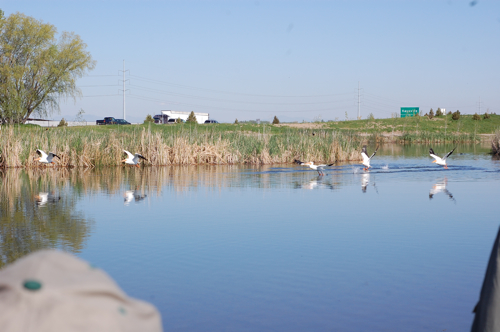 One of the reasons I was at the Great Salt Lake Bird Festival in Utah was to conduct a digiscoping workshop for Swarovski Optik. I really enjoy doing these types of workshops, we start with a basic how to and then we go out someplace birdy and take photos. They are not trips about getting a ton of birds on the list, but more going someplace with a lot of slow moving birds and practice taking photos--you really get to spend some time watching a bird. Sometimes I do this with perched out education birds or at a nature center with bird feeders. In Utah, we went to Kaysville Ponds a small park with lots of cool birds like the above pelicans. It's an urban and well used park. There were several families making use of the ponds' ample fishing resources and walking trails, it was great to see so many kids enjoying the outdoors on a Saturday morning.
One of the reasons I was at the Great Salt Lake Bird Festival in Utah was to conduct a digiscoping workshop for Swarovski Optik. I really enjoy doing these types of workshops, we start with a basic how to and then we go out someplace birdy and take photos. They are not trips about getting a ton of birds on the list, but more going someplace with a lot of slow moving birds and practice taking photos--you really get to spend some time watching a bird. Sometimes I do this with perched out education birds or at a nature center with bird feeders. In Utah, we went to Kaysville Ponds a small park with lots of cool birds like the above pelicans. It's an urban and well used park. There were several families making use of the ponds' ample fishing resources and walking trails, it was great to see so many kids enjoying the outdoors on a Saturday morning.

A really cool bird for me was the western grebe. We have them in western Minnesota but that's a trek, so it was a treat to see them in this urban pond so close and spend time taking photos of the birds. Although, I generally end up loaning out my scope during these trips. I think many people get a digiscoping set up, take 12 photos that are crap and then are hesitant to use the equipment. When I give someone my scope, I sometimes tell them, "I don't want it back until you take at least 250 photos of that bird." The grebes were so close and so mellow, they were great to practice on. And if you end up with 248 blurry photos, they are easy enough to delete.

There were also a ton of yellow-headed blackbirds perched in the open to photograph. People got to practice with close up birds and birds further away (and learn the heartbreak of what heat shimmer will do on your seemingly in focus photos).

I did use this as an opportunity to practice some Blackberry scoping--holding my Blackberry phone to my scope and taking photos of birds. The photos are not high quality, but they do have use. You could document a rare bird and text the photo to your local state records committee, text the photo of a bird that your friend has not seen, sent it to Twitter or use your camera phone as a back up to document a rare bird if you camera batteries die or you left your camera back in the car. It's not easy because you have to hand hold the phone to the scope's eyepiece but practicing on every day birds will help you be ready should a rare bird show up.

Here's a Blackberry shot of our class, it was a fun group and again, I love being out in Utah where you are surrounded by snow capped mountains on a sunny day. The temps were mild and the wind was low--a perfect day for digiscoping. I brought some different camera adaptors for scopes for folks to try and few people brought their own adaptors andwe had a good compare and contrast of what works easily and what does not.

As we were taking photos, I noticed a Forster's tern frantically calling. I looked over as did friend and fellow field trip participant Suzy and noticed a Forster's tern in the water while another flew and called loudly overhead. Suzy noted that the flighted bird had a fish and attempted to offer it to the bird in the water. Looking through the scope, the bird int he water had its tail at an odd angle and could not pull its wing. The tern tried to flap out of the water but could not flap well at all. "Great," I thought, "a wounded bird at our workshop." Suzy hoped that it was an adult feeding a young, but both were in adult plumage. I wondered if there was any way to reach the wounded tern but it was far out in the water. I continued with the workshop with half an eye on the tern, when I noticed the flighted tern dive bombing a man on shore. I limped over to investigate (I'm still a little unsteady on my knee, but it is healing up a little every day).

I found a man with a fishing pole reeling in the tern from the water while the other tern angrily dove at him while screaming loudly. He took the tern out of the water and had some clippers. He was trying to clip the line around the bird but the tern was snapping its beak at him and he was afraid to touch it. I hobbled over and asked, "Can I give you a hand?"
"Yes, please!"
I picked the water logged tern up out of the water--how strange to put a tern in the bander's grip, they seem more like a piece of origami than bird. He swiftly snipped off the fishing line and fortunately the hook was not in her. I did a quick feel for broken bones but couldn't feel anything amiss. The formerly tangled tern's feathers looked too waterlogged to fly. I made a split second decision to let it go back in the water rather than spend the day looking for a rehab center with might cause more stress, especially if the tern wasn't injured, only wet and tired. I opened my hands for her to fly but the tern couldn't get airborne and went right back in the water. I figured that it would be far better for the tern to swim to a quiet spot, dry off and preen its feathers. The bird was mostly likely exhausted from the struggle to get away from the tangled line.
The man with the pole kept apologizing. He was there with his son to go fishing and when he cast his line, the tern flew into it and got tangled, it was a one in a million shot. He watched the tern swim away slowly, "Oh no, I'm so sorry."
I looked at him and his little boy and said, "You did your best to help the bird, I'm sure it just needs to dry off, it's featers were soaked and it wouldn't be able to fly."
"She's probably exhausted too," he said. I agreed.
"I watched before I cast," he said mornfully, "I always watch for birds. And when I swung, there she was!"
 As the bird swam away, some gulls flew over low to investigate (assessing if they could eat it, I'm sure) and then a pelican swam right for it and opened it's mouth. "No," I shouted, "not today pelican!"
As the bird swam away, some gulls flew over low to investigate (assessing if they could eat it, I'm sure) and then a pelican swam right for it and opened it's mouth. "No," I shouted, "not today pelican!"
And that was enough to distract it and the tern paddled further away. I'm all for watching cool and gross natural history moments, but this man and his son seemed traumatized enough as it was and didn't need to see the pelican eat the tern (that's not a pretty way to go, I think I'd rather be eating by a great horned owl). And if you don't know what I'm talking about--those big birds are opportunists and there are videos of pelicans eating pigeons in parks. A Forster's tern is about pigeon sized.

The tern attempted to fly off the water a few more times and each time it got closer to being airborne. Eventually, it disappeared into some reeds on an island where I'm sure it preened and dried out. The man gave up his fishing for the morning, he genuinely felt bad about what happened even though it was just one of those things. I'm glad he took the time to help the bird and I hope he doesn't give up fishing for good.

When the pelicans weren't trying to eat terns, they made excellent digiscoping subjects! It was interesting to note the various sizes of horns on the upper bill. The above bird has a small one.

Check out this bad boy--his horn is HUGE and looks quite impressive in his full on display! No one knows for sure why males get this epidermal plate on the top mandible, but presumably it has something to do with a mating display to female pelicans. It falls off during the summer after the breeding season. I have a couple from my pelican banding days. They look like nasty toenails.

Since pelicans don't sing to attract a female, the put on these quiet, yet showy displays on the water. It almost looks a little passive aggressive, the male silently lifting his wings, puffing his feathers and crooking his neck while showing his horn and a female or two will quietly swim by and quietly take note of this display...and then keep going. It's very Minnesotan.

We had a few warblers and even an oriole (the above Bullock's oriole) to round out the rest of our field trip. Participants seemed to have a good time and learn a few tricks--like try out video on your little point and shoot cameras. One man even got video of a coot feeding it's baby. All in all it was a beautiful morning and it's always fun when your group can do a good deed while on birding trip--like helping out a tangled tern.



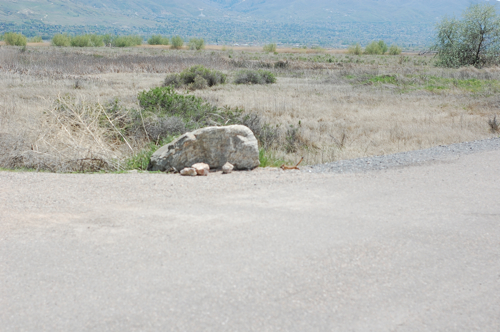 Yesterday I had some time to kill before my flight back to Minneapolis from Utah. I stopped for a wee bit at the
Yesterday I had some time to kill before my flight back to Minneapolis from Utah. I stopped for a wee bit at the 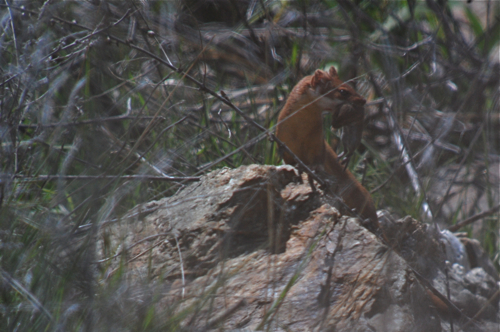
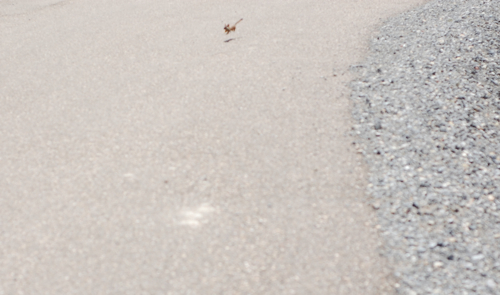
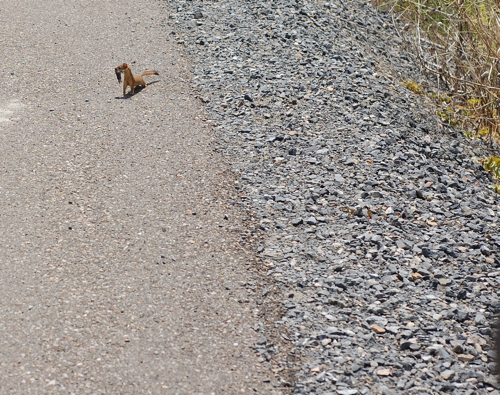
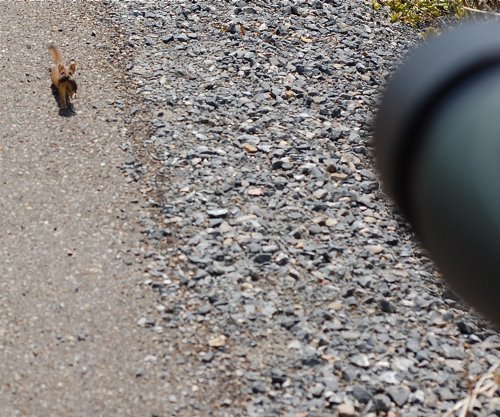
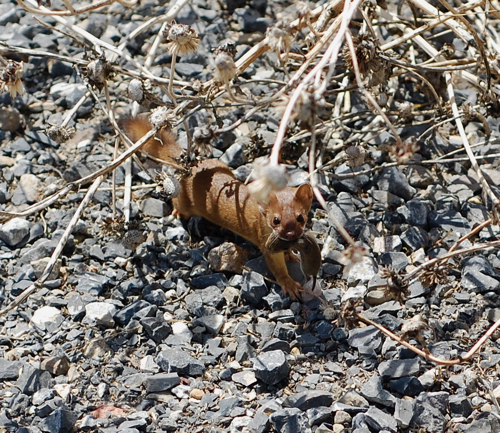
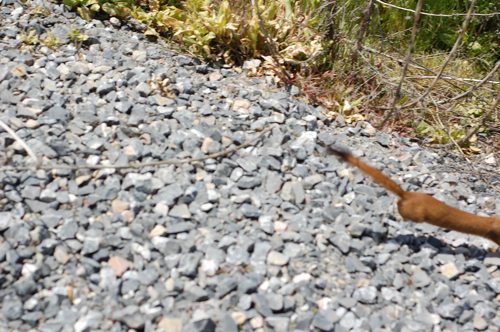
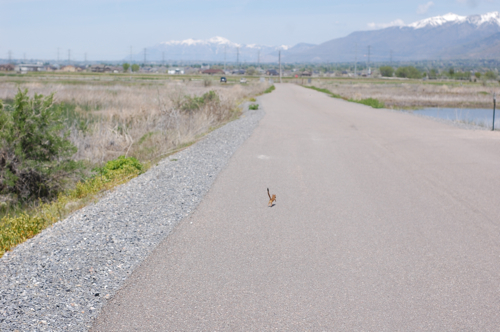
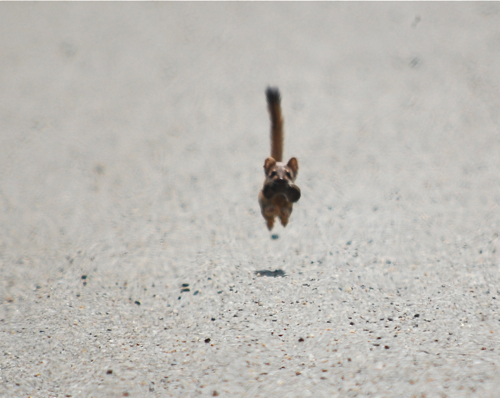
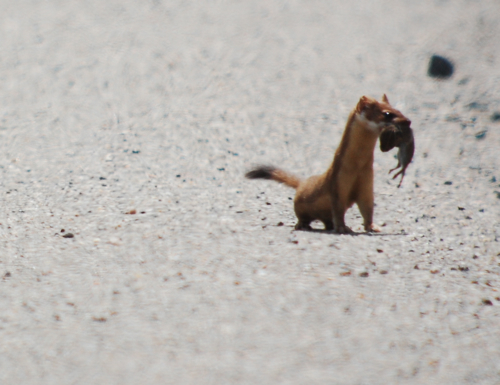
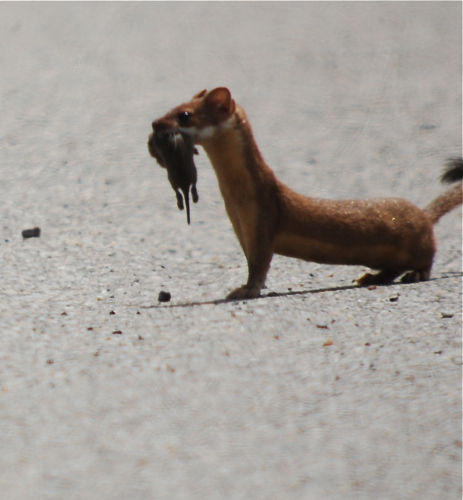
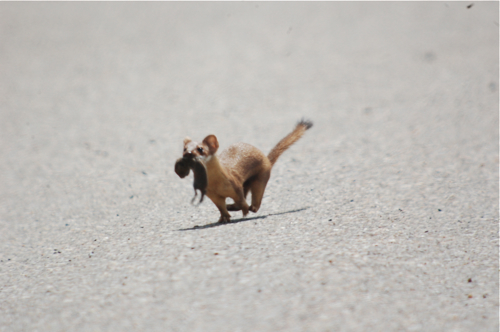
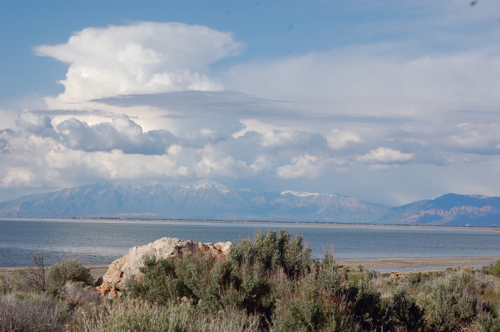
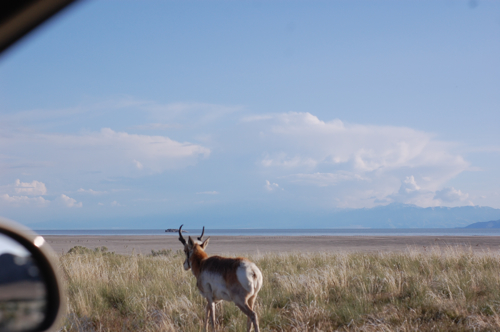
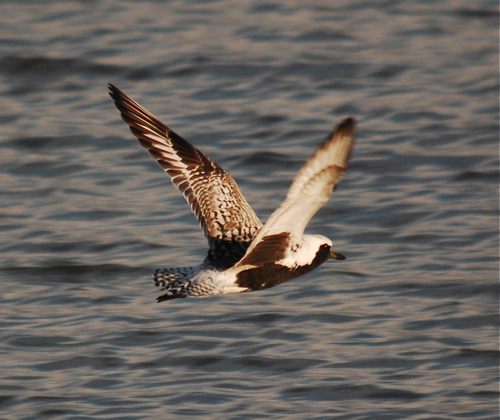

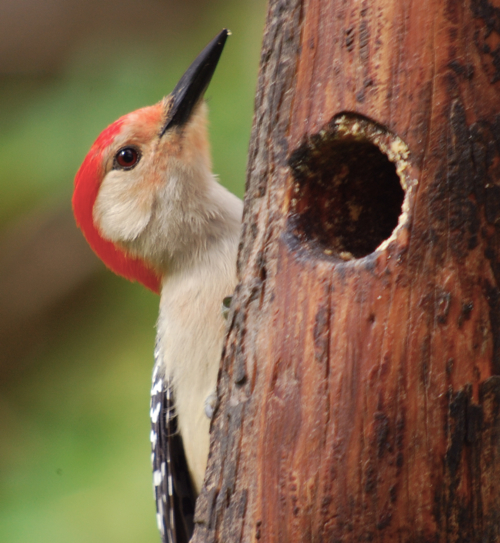 Twice a year I have some bird banding
Twice a year I have some bird banding 
